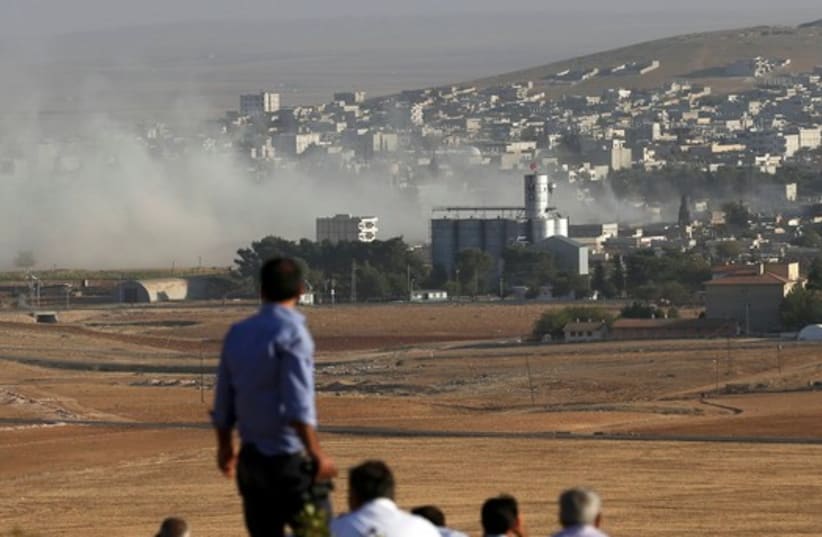“Here we go again,” one person tweeted, claiming a “large” convoy had entered eastern Syria on the “first day” of Biden’s presidency. This relied on AlMasdar news, although the link to the supposed story had been removed when I clicked on it at 12:46pm on Saturday.Another commentator claimed that Biden “invaded Syria.” This claim relied on an i24 report which relied on a report from Syrian regime SANA media. The laundering of the source through i24 made it appear more factual when in fact it was merely Syrian government propaganda. The Syrian regime opposes the US presence in eastern Syria.
The US has several hundred personnel in eastern Syria where it works with the Syrian Democratic Forces to continue to stabilize the area and fight ISIS. The SDF control a large swatch of Syria east of the Euphrates. Trump vowed to leave Syria in 2017, 2018 and again in 2019. In 2019 he withdrew forces from new Tel Abyad and enabled a Turkish invasion that caused some 200,000 people to flee.Kurdish allies of the US in Syria were concerned the US would betray them after they had fought against ISIS alongside US, French and UK special forces. However, the US stayed in Syria. Trump said he would secure Syria’s “oil.” US Central Command and the US State Department appeared to have conflicting goals. It remains to be seen what Biden’s Syria policy is.
The conspiracy theory that claims Biden “invaded” Syria or sent a US convoy there on his “first day” is a misreading of events. The US supplies its forces in eastern Syria with trucks often sent from the Kurdistan region of northern Iraq. This is a tenuous logistics pipeline for US personnel and Combined Joint Task Force Operation Inherent Resolve. Those who follow these movements call them routine. There is no evidence of an increased US footprint, a change in posture or tempo of operations.
Nevertheless pro-Trump commentators and Trump’s own officials often claimed the US was “ending” a series of “endless wars.” Some claimed Trump was the first US president in generations not to start a foreign war. Trump sought to leave Afghanistan and many wonder if that is feasible. Trump did draw down US forces in Iraq from more than 5,000 to several thousand.US forces also left half a dozen bases because of increased pro-Iran militia attacks used 107mm rockets to aim at US compounds on Iraqi bases. Areas such as K-1 near Kirkuk, Q-West near Mosul, a Nineveh base, and Taqadum, Taji, and others were handed over to Iraqis, often with millions of dollars of equipment.The US has trained and mentored some 250,000 Iraqi soldiers since 2014 to help them fight ISIS. Pro-Iranian voices want the US to leave Iraq. In Syria the US helped train and equip almost 100,000 fighters. Turkey, Iran and Russia oppose the US role in Syria and their media is quick to spread conspiracies. They also are critical of the Biden administration. The US also has a lonely base at Tanf in Syria near the Jordanian border.
